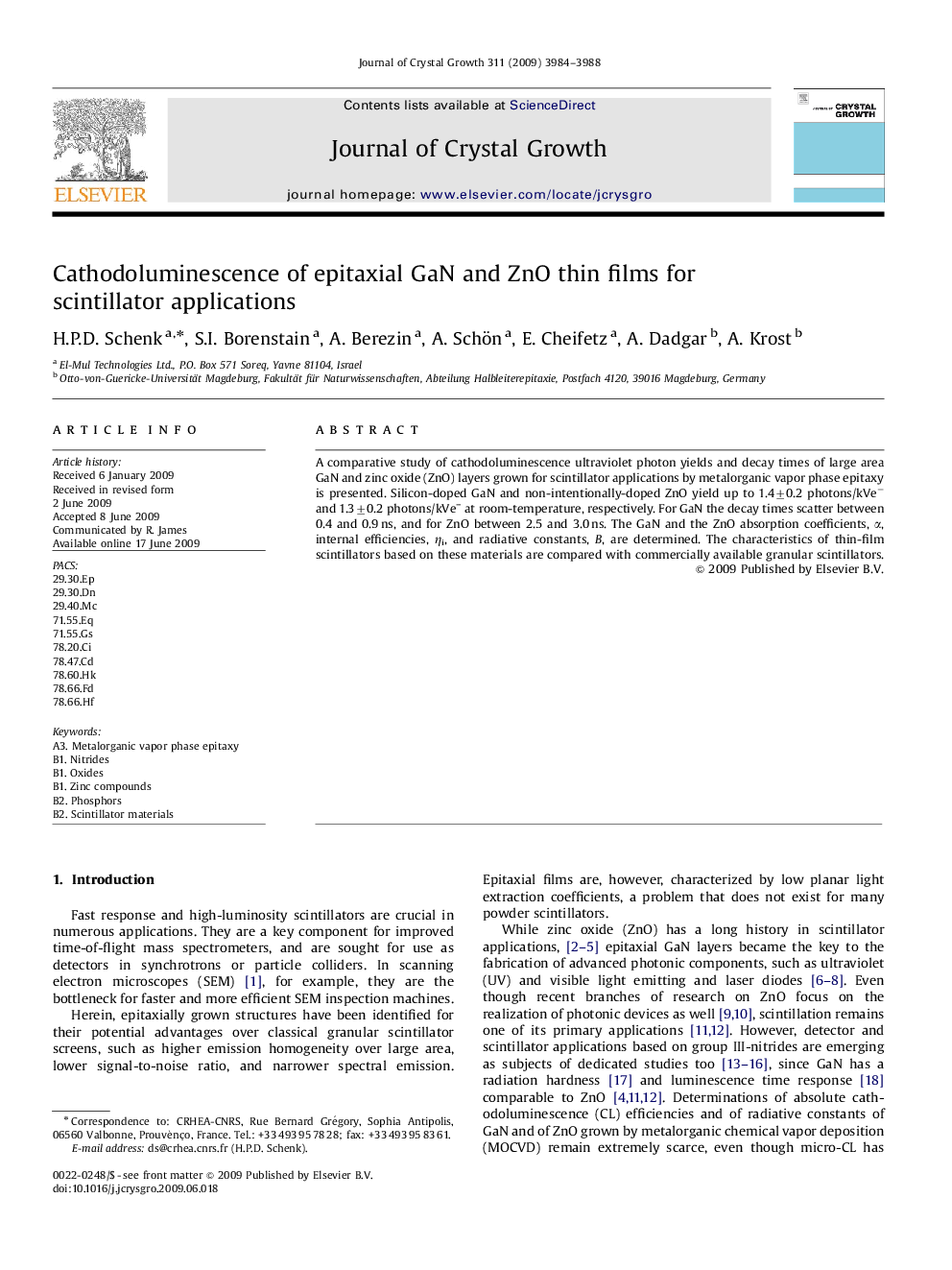| Article ID | Journal | Published Year | Pages | File Type |
|---|---|---|---|---|
| 1794660 | Journal of Crystal Growth | 2009 | 5 Pages |
Abstract
A comparative study of cathodoluminescence ultraviolet photon yields and decay times of large area GaN and zinc oxide (ZnO) layers grown for scintillator applications by metalorganic vapor phase epitaxy is presented. Silicon-doped GaN and non-intentionally-doped ZnO yield up to 1.4±0.2 photons/kVe− and 1.3±0.2 photons/kVe– at room-temperature, respectively. For GaN the decay times scatter between 0.4 and 0.9 ns, and for ZnO between 2.5 and 3.0 ns. The GaN and the ZnO absorption coefficients, α, internal efficiencies, ηi, and radiative constants, B, are determined. The characteristics of thin-film scintillators based on these materials are compared with commercially available granular scintillators.
Keywords
Related Topics
Physical Sciences and Engineering
Physics and Astronomy
Condensed Matter Physics
Authors
H.P.D. Schenk, S.I. Borenstain, A. Berezin, A. Schön, E. Cheifetz, A. Dadgar, A. Krost,
